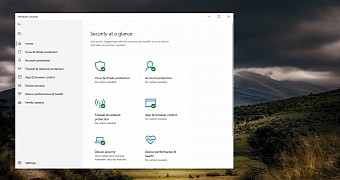Microsoft Edge is becoming a lot more popular these days, and it’s all for a good reason: Microsoft has put a lot of effort into getting it right, so it comes with a massive feature arsenal that finally aligns it with the rest of the industry.
As I said on several occasions, Edge is just the perfect Windows browser right now, and every new update brings additional improvements that refine the experience even further.
And yet, there are moments when some features aren’t working as planned or when the browser itself fails to run because it’s blocked by the security software installed on your computer.
And here’s what you need to do if Microsoft Edge is blocked by an antivirus product.
Such a problem was encountered earlier this month when Microsoft Edge was suddenly blocked by Trend Micro’s antivirus engine, and it all happened after a definition update released by the security vendor landed on Windows 10 computers.
Only Edge 87 was blocked by antivirus software, and all the other browsers worked just fine.
In this case, the easiest workaround was to just add Microsoft Edge to the trusted programs list in the antivirus. This is something you should always consider doing, but only after trying to figure out the cause of the warning.
There are moments when antivirus engines might block your browser because of a malicious file that you tried to download, in which case you need to let the security product remove the infection or quarantine it. When the threat is gone, everything should return to normal.
If the security warning comes from Microsoft Defender (which is bundled with Windows 10 by default), you should make sure you didn’t download any malicious files before setting up an exclusion for Microsoft Edge.
If it’s all caused by a bad definition update, the easiest way to go is to check for another update. In most cases, security vendors are working around the clock on fixing this kind of problem, and patches are released pretty fast after the first reports are received. So if you come across such a problem, you should first report it to the parent company and then install the latest update for your security product.
Microsoft, for example, offers real-time antivirus protection in Microsoft Edge, blocking apps that are considered to pose a threat to your computer, though it goes without saying accidents do happen and some programs could be blocked from running even if they’re completely clean. But the company fixes such problems pretty fast, as long as it’s aware of them.
“Microsoft Defender Antivirus is the next-generation protection component of Microsoft Defender for Endpoint. This protection brings together machine learning, big-data analysis, in-depth threat resistance research, and the Microsoft cloud infrastructure to protect devices in your enterprise organization,” Microsoft explains, adding that its software includes “behavior-based, heuristic, and real-time antivirus protection, which includes always-on scanning using file and process behavior monitoring and other heuristics (also known as real-time protection). It also includes detecting and blocking apps that are deemed unsafe, but might not be detected as malware.”
Overall, if your antivirus is blocking Microsoft Edge, just make sure you didn’t download any malicious file and then set up an exclusion in the security app. Reporting the whole thing to the parent company is also one good way to make sure the whole thing isn’t becoming more widespread. And last but not least, always keep your security products fully up-to-date to get the latest fixes.

 14 DAY TRIAL //
14 DAY TRIAL //